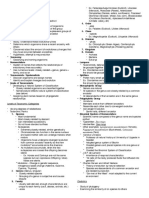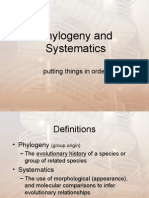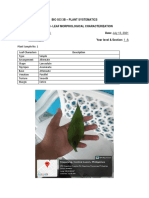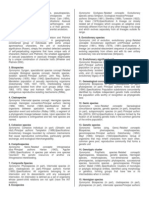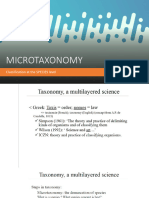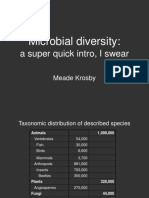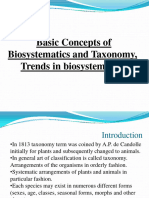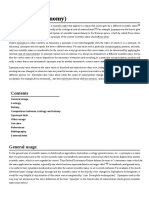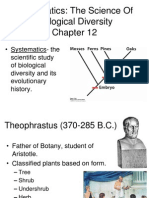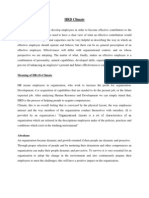100% found this document useful (1 vote)
319 views56 pagesIntroduction To Systematics
This document provides an introduction to the field of systematics and plant taxonomy. It discusses key concepts including:
1) Why plants are studied, including their importance as producers of oxygen and economically.
2) What systematics aims to do, which is infer evolutionary history through the use of multiple types of evidence.
3) Key concepts in evolution including descent with modification through genetic inheritance, lineages, natural selection, and genetic drift.
4) The goals and methods of taxonomy, including description, identification, nomenclature, and classification of organisms.
Uploaded by
Veronica MedranoCopyright
© © All Rights Reserved
We take content rights seriously. If you suspect this is your content, claim it here.
Available Formats
Download as PDF, TXT or read online on Scribd
100% found this document useful (1 vote)
319 views56 pagesIntroduction To Systematics
This document provides an introduction to the field of systematics and plant taxonomy. It discusses key concepts including:
1) Why plants are studied, including their importance as producers of oxygen and economically.
2) What systematics aims to do, which is infer evolutionary history through the use of multiple types of evidence.
3) Key concepts in evolution including descent with modification through genetic inheritance, lineages, natural selection, and genetic drift.
4) The goals and methods of taxonomy, including description, identification, nomenclature, and classification of organisms.
Uploaded by
Veronica MedranoCopyright
© © All Rights Reserved
We take content rights seriously. If you suspect this is your content, claim it here.
Available Formats
Download as PDF, TXT or read online on Scribd
/ 56
